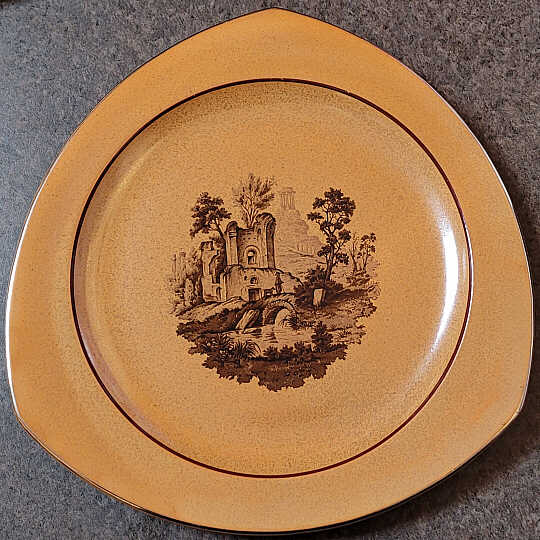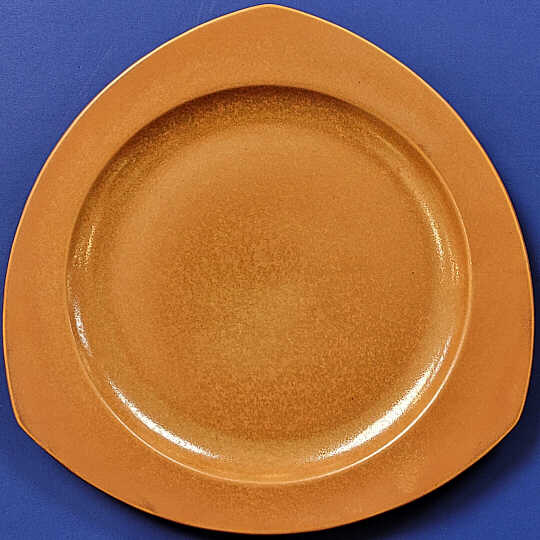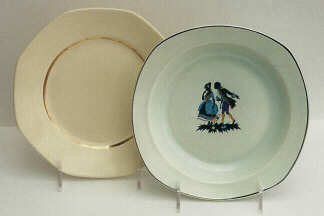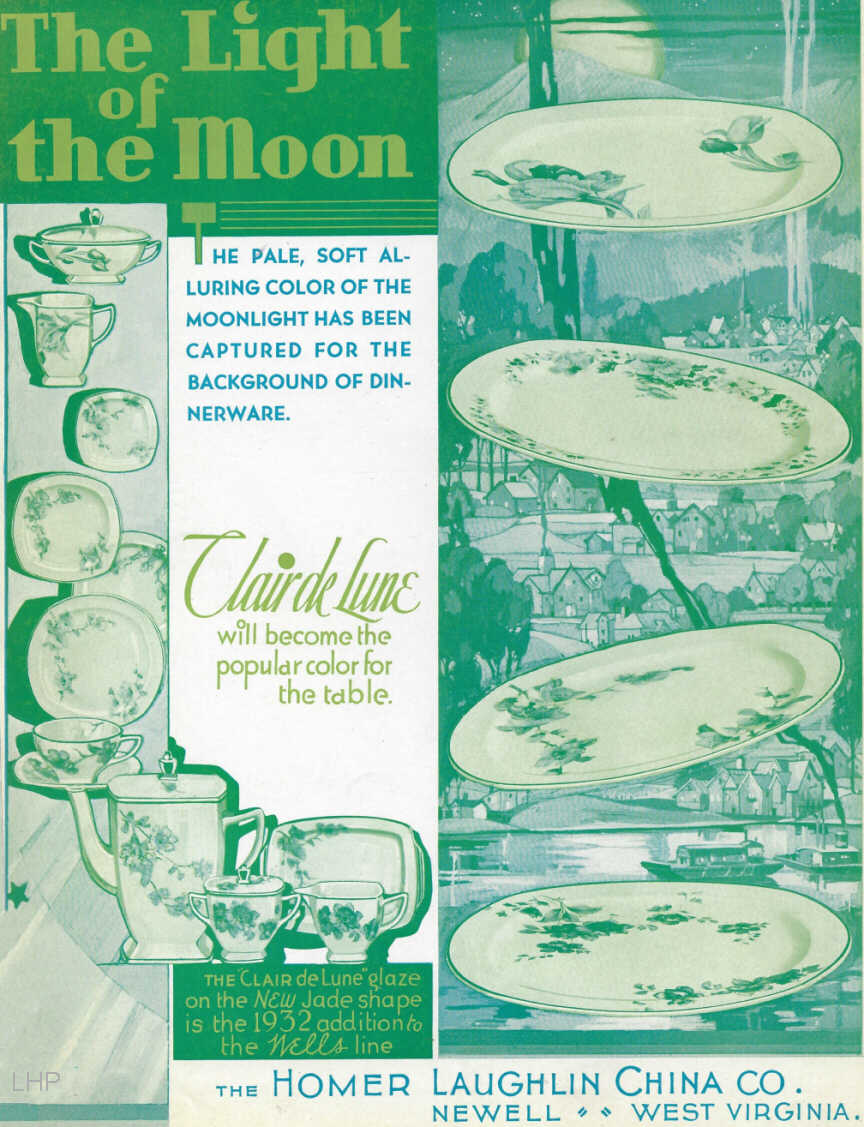|
Jade was a square shape made by Homer Laughlin for roughly four years starting in 1932.
In early spring of 1931, the art department experimented with a triangular shape. By March, a triangle plate, cup, and saucer were modeled and samples were made, however, development on the new shape stopped soon after. With the success of Century and similar square shapes by other potteries, it was decided to instead create a second square shape instead.
 |
 |
| Experimental triangle shape plates in the rust art glaze from 1931
|
Jade was developed along with the "Clair de Lune" glaze - a special vellum glaze with a green cast. In August 1931, it was determined that the shape should be a convex square shape with narrow rim. Before modeling actually began on any of the pieces, trials were made of the Clair de Lune glaze. Pieces from other lines were given the special color, but none of the samples were acceptable. It would take two more months and several more tests until Clair de Lune was perfected.
After the initial tests for Clair de Lune, Rhead made sketches of the various shapes. Development of the new line was put on hold for almost two weeks while work temporarily shifted to another new shape, Ravenna.
In early September 1931, the name "Jade" was given to the new square shape and Rhead had finished several sketches. These were then turned over to Al Kraft for modeling. The first pieces made were the 9" plate, teacups, and sugars. Samples of these three pieces were made in the Clair de Lune glaze and were approved in early November. With the general shapes and special glaze finally in place, production began and more items were added.
 Jade was also made in the then one-year old Vellum glaze, however, at the Pittsburgh show in January 1932, only Jade in Clair de Lune was introduced to the public. Clair de Lune has a texture similar to vellum. Jade with Clair de Lune was often advertised as, "moon light captured in dinnerware." Jade was also made in the then one-year old Vellum glaze, however, at the Pittsburgh show in January 1932, only Jade in Clair de Lune was introduced to the public. Clair de Lune has a texture similar to vellum. Jade with Clair de Lune was often advertised as, "moon light captured in dinnerware."
Jade was not well received. Records indicate that in 1932, it did have moderate success in terms of sales, falling behind the best sellers of the year: Yellowstone Ivory, Yellowstone Vellum, Century Vellum, Ravenna, and Orleans. The company must have realized early that Clair de Lune was not going to have the success they had anticipated, since it was not used on any other shape. During 1933, Jade Clair de Lune was still being offered, but more attention was given to patterns on Jade Vellum. To the right is a Jade soup bowl in the Clair de Lune glaze. Behind it is a Yellowstone shape plate in vellum to show the difference between the two glazes.
One of the few times Rhead altered Jade was in July 1932 when he noted remodeling the dinner plate to have a circular center. To date, only square wells have been found, so the circular version must not have been put into production.
Jade was eventually discontinued after being overshadowed by embossed lines of the 1930s such as Orleans, Virginia Rose, OvenServe, and Marigold.

1932 trade advertisement for the Jade shape and Clair de Lune glaze.
|